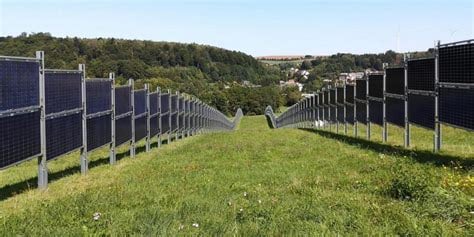Plastering agricultural land with parking lots and suburban sprawl is a crime against humanity. This wasteful land use needs to end.
I’ve done a ton of biking in my area over the last 15 years, and it’s been depressing seeing how much former farmland and unused wild area is getting gobbled up by the fucking McMansions and “high 700s” McTownhouses. The townhouses are especially sad - like, you’re out in the middle of fucking nowhere (no town in sight) and yet you’re jammed in with neighbors on both walls?
47 percent of the country is unoccupied.
Unoccupied land is otherwise called “nature” and is quite useful for a lot of things.
Efficiency doesn’t care how big your country is, sprawl would be as inefficient in Cyprus as in Russia, you spread your services and infrastructure over an unnecessarily large area, to huge economic and environmental cost, and forcing people to rely on a car to move around
Sort of a lemons-into-lemonade situation. But maybe we shouldn’t have paved over prime agricultural land to make parking lots to begin with.
The only reason I would be against this is because it disincentivizes removing large parking lots, which are primarily a waste of space. If we could replace some of that wasted space with housing (which could also have solar slapped on it) that would be ideal.
This picture/render looks like it’s in Europe, where that could maybe be feasible. In the US, though, I think we need to take what we can get.
I’ve seen this concept myself built in the Netherlands already, if I’m not mistaken
Many EV fast chargers have a solar roof over the parking spot. The one in this picture look kind of similar in design to the transparent solar roofs that Fastned puts over their chargers in the Netherlands and Germany
Parking lots ain’t going anywhere.
They are and they must. There is no path forward that doesn’t massively disinvest from personal vehicles.
They must, but they aren’t. The infrastructure investments to make mass transit preferable in sprawling cities will not happen soon enough. The people in power will not compromise their worship of free markets for climate change. Over time, the market will transition that way, but not any faster under the current system.
US auto-domination isn’t even the result of market forces though.
Don’t get me wrong, I’m not a fan of laissez-faire policy or capitalism in general, but government funded highway lanes are no more capitalist than government funded rail tracks. The current situation in the US required enormous government intervention to establish, in the form of the forced seizure of property to make way for highways, hundreds of billions of dollars (inflation adjusted) to build those highways, mandatory parking minimums for new construction (to store all the cars from the highway), government subsidies for suburban style development and later on tax schemes that resulted in poorer inner city areas subsidizing wealthy suburbs, and zoning laws that made it illegal to build a business in a residential area (which worked together with anti-loitering laws to make it so that if you didn’t live in a neighborhood you had no “legitimate” reason to be there. It’s not a coincidence this happened in the wake of desegregation.)
Similarly fossil fuel production in the US actually receives direct government subsidies at the federal and sometimes state level (some of which have been in effect since 1916).
Now, we can get into the weeds and talk about how government action is actually a necessary part of capitalism and the intertwined nature of power structures and so on and so forth, but it’s important to remember that there’s nothing inevitable or natural about the mess we’re in right now, as some would have you believe. It required conscious planning and choices, as well as tremendous effort and tremendous injustice to get here.
Oh, I know full well that the free market did not get us here. I’m saying that the politicians will, at best, force us to use the free market to make progress. Rules for thee and whatnot. Things will probably happen more slowly than that, as auto makers will resist the market forces more than we can push in the markets’ direction.
They are in large cities. Look at aerial photos of, e.g. Washington DC from 20 years ago vs today and you’ll see many fewer parking lots.
Too bad the driving force is gentrification.
My comment specified large parking lots for a reason. The amount of space wasted around seldom used, high volume areas (like stadiums) is absurd, and other countries have shown they’re much better served by increased public transit, not giant parking lots that sit empty 300+ days of the year.
This was a parking lot, now it’s a peaceful oasis!
Oh yeah buddy what temp is it outside rn?
Asphalt loves heating cities up
This article is literally about shading the asphalt
Yeah but asphalt is usually chosen due to it being the cheap and easy option, I can’t imagine anywhere that hasn’t already used concrete is happy to spend more on their parking lot unless forced, and tbh if of there’s enough solar panels in the world to match US’s parking lot surface area
The energy generated by commercial solar installations is then sold, generating income. No one’s expecting parking lot owners to do this out of the goodness of their heart
Ok but like why wouldn’t a solar farm be an acceptable alternative?
Putting solar farms in urban areas instead of rural ones doesn’t make much sense.
How so? A) Less transmission lines to where it’s needed and b) more qualified/trained staff centralized to the solar installs.
I’m not against rural solar by any stretch but I can’t fathom being against urban solar? We need to solar all the things.
In my post I literally said that solar can be put on top of houses so I’m not sure why you want to argue with me about this. I just think urban areas are better served by homes with solar on top than parking lots with solar on top.
Okay, reasonable enough, I had read your response as “no solar, just homes and put the solar in rural”.
Not all agriculture is done in full sun. Ginseng, coffee and other important crops do best in shade. And you can put the panels up on grazing land. The critters often appreciate the shade which approximates a savanna environment.
And things like vertical bifacial solar panels can work especially amazingly on grazing land that isn’t suitable for crops.

Counter-intuitive as they may look, they actually have a number of benefits:
- The panels face east and west, meaning they generate peak power in the morning and evening, which corresponds to peak demand => less need for energy storage to bridge the gap between the mid-day peak in production from traditional PV and the aforementioned morning and evening demand peaks.
- The panels are vertical, which makes them easier and cheaper to maintain, as dust, snow, and rain naturally shed from their surfaces.
- The panels get less direct energy during mid-day, keeping their surfaces cooler. Turns out cooler solar panels are more efficient at converting light energy into electrical energy.
- The arrangement lends itself very naturally to agrivoltaics, which means you can derive more yields from a given piece of land and use less land overall than if you had segregated uses.
- The compatibility with agrivoltaics allows farmers to diversify their incomes streams and/or become energy self-sufficient.
The vast majority of the benefit comes from the fact that they are bifacial not vertical.
In fact depending on the weather a standard mount but with bifacial panels will outperform the vertical.
This guy here does a very thorough comparison.
Solar fencing produces 3% more yield and 30% more revenue than rooftop.
https://www.gridcog.com/blog/solar-fence-vs-ground-mount-solar
As I understand it, the biggest struggle with such panels is that it prevents heavy machinery from working the crop
Every installation has benefits and drawbacks:
- If you have humans walking below PV, you must prevent parts falling down
- The support must be quite wide, requiring more expensive carrying members
- Constrains traffic
- Cars are protected from hail and heat (good for car factories!)
- Makes electricity where it’s needed
- Very visible progress toward renewables
France made it mandatory for large malls to install these btw.
The first two “cons” seem like non issues, and could be used for any structure ever.
Sounds like a bare minimum for an installation. Sure, it costs. And that is why it should be mandated.
Yeah, if we lived by that rule, industrial HVAC wouldn’t exist because everyone would be afraid of things falling from the ceiling.
you must prevent parts falling down
So like any ceiling with HVAC, etc? I was thinking that the coverings were a boon to pedestrians due to the shade they provide on hot days (depends on location, of course)
So like any ceiling with HVAC, etc?
Yes, but HVAC systems rarely have to cover an entire parking lot. There’s a lot of attendant infrastructure that comes with it. Compare that to dedicated rural solar fields, where you don’t have to worry about people wandering in and around the panels. Its not a deal-breaker, but it does raise the unit price.
You have to engineer the supports to prevent collapse even if a car drives into them
Cars are protected from hail and heat (good for car factories!)
What? Car companies would love for your car to get damaged. That way, they can sell you replacement parts.
Once you buy them sure. But not while they are sitting on a lot outside the car factory waiting to get sold
You know most parking lots aren’t at car dealerships right?
Yes, I’m just speaking to the point the comment was making, that solar panels over parking lots that are at car factories particularly benefit from the hail defense aspect because the parking lot owner (the factory) has a vested interest in maintaining the condition of the parked cars. This isn’t an argument for any point of view, it’s an explanation of what was clearly ambiguous language by the original commenter, based on your misinterpretation. The sass is unnecessary
Bonus effect is it helps keep customers cars at a cooler temperature
Also helps the guy wrangling carts, those things get hot in the sun
Oh yeah! I didn’t even think of that
The amount of area needed for solar does not even begin to approach the amount of farm land. People generally aren’t building solar panels on farmland anyways? The largest instillations in the US are in the middle of the fucking desert.
Also get rid of as many parking lots as possible.
There is just so many layers of false and absurd narrative in this.
Not much desert around me. Good farmland is getting leveled and solar put on top when there are parking lots already flat they could do it on. It’s just much, much easier to work with fresh ground. It’s why old warehouses are left to rot and farmland right next to them are razed for new warehouses.
I put some solar on my farm, but made sure to use a plot that isn’t suitable for farming.
In Germany they sometimes put solar on the south side of historic trash hills. Seems like a good idea I can’t think of downsides.
You haven’t seen much of the US from ground level have you. There are more and more panel farms being built on good farm land. Sizes ranging from 10 to 40 acres at a time from all the ones I’ve seen.
It might seem small to you, but it does add up.
People generally aren’t building solar panels on farmland anyways?
At least here in Germany they do
This post was maybe referring to agrovoltaics?
The largest instillations in the US are in the middle of the fucking desert.
Still this is obviously worse right? We’re taking untouched wilderness and turning it into a wasteland of blue silica. Deserts are pretty unique biomes with their own set of diverse animal and plant wildlife.
Farm land is already void of most biodiversity and usually used to grow corn or some other form of unnecessary cattle feed - yeah ideally both get rewilded - but it feels better to reuse an already existing bio wasteland instead of creating new ones…
It depends on how you see environment safety.
Either you want to safe dieing species and biomes, or you want to safe somehow the global ecosystem that keeps us alive.
First is illusionary, second is apparently too expensive according to the industrial nations.
If you can place solar in the desert without killing food supply, then do it!
The USA will have a big problem producing food once the Mediterranean climate zone wander north.
Also a lot of USAs food production is supported by a big underwater reservoir that is very close to dry up…
However I never see that they adress this issue…
A lot of farmland goes to hay fields too, which isnt just for cattle and aren’t devoid of biodiversity. For example, barn owls use hay fields to hunt hence why they tend to nest in and around barns(how they got their name). Many farmers encourage them to live and nest on their property.
Hay often gets sold locally to people who own horses, goats, chickens, alpacas etc. Small, local rural economies depend on this sort of thing. Plus apiaries are often set up next to hay fields to promote pollination for certain types of grass hays, which is then sold as local honey at farmers markets.
Not saying solar can’t coexist with what I’ve said above because it absolutely can and I’d love to see more of it. Just this idea that farmland doesnt support wildlife isnt true. Deer, barn owls, rabbits, mice, snakes all use the hay fields before and after cutting. Plus the fields used for hay aren’t good for much else. Too rocky, hilly, or nothing else will grow.
Source - I’ve lived in a rural farm town for most of my life and grew up playing in hay fields. Lots of critters live in there.
Do you really think there’s more wildlife in managed hay fields compared to letting those fields rewild? Seems quite dubious
FYI I’m a reject modernity return to hunter gatherer shill so I think humans should aim to reduce the amount of cultivated land in general
Depends. Are there lots of tall buildings around the parking lot? Solar panels are made of a lot of rare metals and so we have to be very selective about where we install them to maximize energy output. For this region large open spaces near the equator work well. Not that they can’t work elsewhere, or couldn’t work over a parking lot, but there’s a lot of variables that have to be considered on each individual level.
Solar panels are made of a lot of rare metals
Rare Earth Metals aren’t actually that rare, although they do tend to be concentrated in countries outside our traditional western sphere of influence. We’re seeing a lot of political wrangling in South America and Central Africa, precisely because countries like Bolivia and the Democratic Republic of Congo have an outsized stock of these minerals. In fact, a big part of the conflict in Rwanda along their border with the Congo stems from illegal mining and black market export of minerals, and the subsequent criminal cartelization that’s sprung up around this traffic.
there’s a lot of variables that have to be considered on each individual level
If you’re talking about a globally coordinated geo-engineering project to maximize solar electricity production, then yes - building a big band of solar plants inside the Tropics zone would yield the biggest band for buck. But then moving that electricity out again becomes a challenge, particularly if you’re trying to get it to mega-cities like NYC or Tokyo or London or Beijing.
If you’re just trying to generate local green power in Ohio, without running massive HVDC lines all the way down to the Yucatan Peninsula, then covering the Browns Stadium or the JACK Cleveland Casino in solar panels is as good a use of solar infrastructure as anything.
Yeah like it’s not always a bad thing to commit resources with less than perfect efficiency. Having renewable energy is better than having none every time.
It’s not so much that they’re rare as there is a known limited supply of them, and the means of harvesting them currently creates a lot of pollution. Fossil fuels are obviously worse in this regard. And even nuclear has a limited supply in terms of naturally available fuel sources.
Renewable energy should be operated in the manner that best protects the environment, and we should be trying to waste as little possible in operating it. For those reasons, I think efficiency and sunlight hours are important considerations. The fossil fuel industry is extremely wasteful and destructive. The renewable industry should be the opposite of that.
Small solar installations of a few panels, sure like they don’t need perfect efficiency. But if we’re committing hundreds or even thousands of panels to an installation? We should maximize efficiency.
It’s not so much that they’re rare as there is a known limited supply of them and the means of harvesting them currently creates a lot of pollution.
And this is where we get into the real economic problem of any industrial scale energy project. FFS, its not like labor abuses and property mismanagement were foreign to the coal or O&G industries. But when people talk about a Green New Deal, a bit part of the project is about building social infrastructure alongside energy infrastructure, such that you’re not ending up with a bunch of strip mines and company towns doing what Standard Oil/Exxon and Peabody Energy were doing 50 years ago.
The fact that these rare earth metals are in countries with large native populations that westerners are dismissive of / openly hostile to doesn’t help things either. How many American petrochemical CEOs would love to revisit King Leopold II’s run through the Congo, if it meant profits on par with what Saudi ARAMCO generate?
Renewable energy should be operated in the manner that best protects the environment, and we should be trying to waste as little possible in operating it.
That would require a degree of political economy afforded to the folks living in and around the areas of resource extraction and labor exploitation. And that’s where I think we run into real problems.
Even as we speak, the state of Georgia is gearing up for some serious labor conflicts around their EV battery plants. Labor groups are attempting to unionize the battery giga-factories being built there, while Atlanta’s Cop City is being constructed to crack down on it. And that’s in the relatively peaceful and post-industrial Atlantic Seaboard. Bolivia’s on its second failed coup attempt in less than four years.
I could very easily see us doing an Iraq-style intervention into one of these big cobalt/lithium exporting countries, on the grounds that they’re being oppressed by an evil government state nationalization program. Ask Gamal Abdel Nasser or Salvadore Allende what happens after that.
Solar panels don’t use any “rare metals.” Solar carport projects simply cost 3-4x more on a per watt basis than large “green field” ground mount projects. This is due to the increased structural, permitting, and install costs. Carports also cannot track the sun, which reduces their output by about 20%.
Nah, just give like Walmart and Target and other stores that have large parking lots a tax break or something.
FUCK THAT. Levvy additional taxes on any Corp that doesn’t utilize their solar potential while subsidizing the cost of the panels.
You can install solar panels on agricultural land and still farm on it. You just need to install the panels vertically. It’s called agrivoltaics. The photovoltaic cells can actually produce electricity when they are exposed from either side. It’s just that normal solar panels are opaque on the bottoms side. So for a vertical installation you have to use bifacial panels which are transparent on the other side. And the drop in efficiency in a vertical installation isn’t much compared to a traditional installation, since both sides of one panel now produce electricity, even the shaded side that is only exposed to ambient light produces electricity. And they are much more efficient during their peak hours, since it’s much cooler during sunset and sunrise then the middle of the day. PV panels are less efficient when they get hot.
In theory a great idea. In reality you get very little space to farm on. Imagine how you drive though the solar panels with an harvester which is as big as 6 rows are wide?
I mean you can shrink down the farming equipment, but farmers make more money not plastering their fields with solar.
If they use solar then they go full south orientation panels because then you don’t need to deal with anything on that field anymore.
Also after you install solar panels on a field with heavy equipment the soil is pressed and you will have a few years until you get the soil quality back up.
Not everywhere in the world do they use giant combines to farm like in America. And some crops are planted and harvested by hand like asparagus. Would it work on every farm? No but there might be scenarios where it does.
Yeah, when it comes time to do tillage, that’s WILL constrain the directions you can till the ground. Generally, you really want to till at an angle to the direction of planting to break soil compaction better. And to get the proper trash mix into the soil to prevent erosion.
Not a good idea…
Depends. Some agro-PV systems I have seen are 50% transparent. The plants get a sufficient amount of light, and are protected from hail and heavy rain.
I have even seen a prototype where the pillars for the panels incorporate a rail system on which sowing, weeding, and harvesting tools can run electrically in instead of being pulled by a tractor.
PV coverings also trap some ambient heat and regulate the surface temperature better than full exposure, acting like a greenhouse that encourages plant growth.
Folks so set on zero sum systems that they ignore synergies.
Most of the growth in solar has been market driven. It’s why Texas has a lot of solar despite them subsidizing oil and gas. It’s free, plentiful energy that hits the ground almost every day. If you have boatloads of land that’s not ideal for farming, yet not too hot for much of the year, it makes economic sense.
If the U S didn’t subsidize corn for ethanol it might make even more sense to build solar instead of grow corn. And then you could grow other crops under the solar panels.
Serious question. Why would it ever need to be one or the other?
There’s already solar panels on “prime agricultural land”, so what? Land use for solar/green power is so small right now, we shouldn’t be trying to regulate where it can’t be installed… Put it everywhere.
On your house, above parking lots, on the rooftops of large warehouses… If there’s a surface that’s exposed to the sun for 5-8 hours a day, put that shit there. Unless there’s a good, practical reason not to…
IDK seems a lot like a false dichotomy to me.
“we don’t want solar panels on farmland” is just a conservative talking point. It’s not actually a problem, but it’s something that resonates with their boomer voter base.
Not just boomers or conservatives. I’m generally pretty liberal but when I see land developed for solar, and they’re using weedkiller in there and it used to be a farm or a forest, it just feels wrong somehow.
Like this has to be early days and it will get better, right
Yeah, plastering parking lots over prime agricultural land was definitely a mistake. And it’s hard to wind that back. We just need to make sure new infrastructure and planning reduces car dependency rather than further entrenching it.
It also has to be protected from vandals and morons protesting it.
Also, just for laughs, make the support bars too low for modern pickup trucks haha!
Might as well. The city has already paved over the prime farm land.
The problem is a simple paved lot can be redeveloped into something useful easily. Once there are EV chargers and and solar roofs in place, it’s that much harder to break the cycle of car dependency. Places like Walmart/Costco/strip malls are probably better off just placing panels on the roof instead of building a new structure for them. I’d actually extend that to just about any building. This isn’t really happening at any scale on its own, which tells us it’s less economical than other installations. Forcing higher cost installations while also entrenching parking lots that often shouldn’t exist seems like poor policy, although I’m sure there are some places where it makes enough sense. But if we care about preserving farmland and wild spaces, stopping sprawl is the only real policy that matters, and that means stopping car dependency and parking lots.
Keeps cars cool, can be used to charge EVs. Yeah, sounds good. Make the parking lot only partly covered and those spaces EV only to encourage the transition.
Why would you need to dedicate the output to a specific goal? We already have a good target for all new renewable energy facilities - to reduce the need for fossil fuel. Just feed it back to the power grid.
Also - are you suggesting to “Make the parking lot only partly covered” just because want to give EVs the better (shaded) spots? Seems like a waste of the extra energy you could get by covering the entire lot…
I’m not sure photovoltaics would generate enough juice to recharge a vehicle during 30-60 minute shopping trip. Certainly not on the current iteration of electric vehicle charging capacity.
This is a good use of space and a potentially beneficial way to generate power for the storefront (AC and refrigeration during peak hours are real electricity hogs and would tie out with available sunlight), but idk how effective it would be at recharging vehicles. Not unless the space also has large reserve batteries that can discharge rapidly, and the solar cells were exceptionally efficient at generating wattage.
This is, incidentally, why wind plants get you more bang for your buck than solar plants. The supermassive turbines out along the Corpus Christi coastline can generate north of 3 MW/h. Meanwhile, you’d need 75,000 sqft of 200-watt 5’ panels to generate an equivalent. Electric car batteries hold somewhere between 40-100 kWh of power. So getting the math to work is a bit tricky.
Or it could just be a nice fringe benefit. It doesn’t have to fully charge your car, just a little trickle charge, enough to cover the trip there perhaps. I feel like it’s be enough output to at least do that much, combined with being a shaded spot.
Throwing up some canvas shades is a hell of a lot cheaper than adding big integrated solar panels overhead.
I’ve got an electric plug-in hybrid. Even with a relatively small batter (50 mile range) and an eight hour overnight charge time, I can’t bring it up to full. An hour of trickle charging is going to get you a few miles of driving, tops. Idk if the infrastructure investment for all the little charging terminals is going to be worth the return, relative to - say - powering the business itself.
Right, point would be that the energy only funnels into a car when the space is occupied, else it goes into powering the building. Is it fantastical and cost prohibitive right now, sure, but it’s an idea that could be implemented when it’s less so. These technologies get significantly cheaper over time.
One way to think of it is that if photovoltaics are cheap and efficient enough to be used in general all over the grid and be worth the investment, then if you’re building a structure with the sole purpose of blocking the sun it may be a good candidate!
Plus since the cost involves a large investment of capital over a long period of time, revenue from the energy generated might make it profitable at the end of her day.











